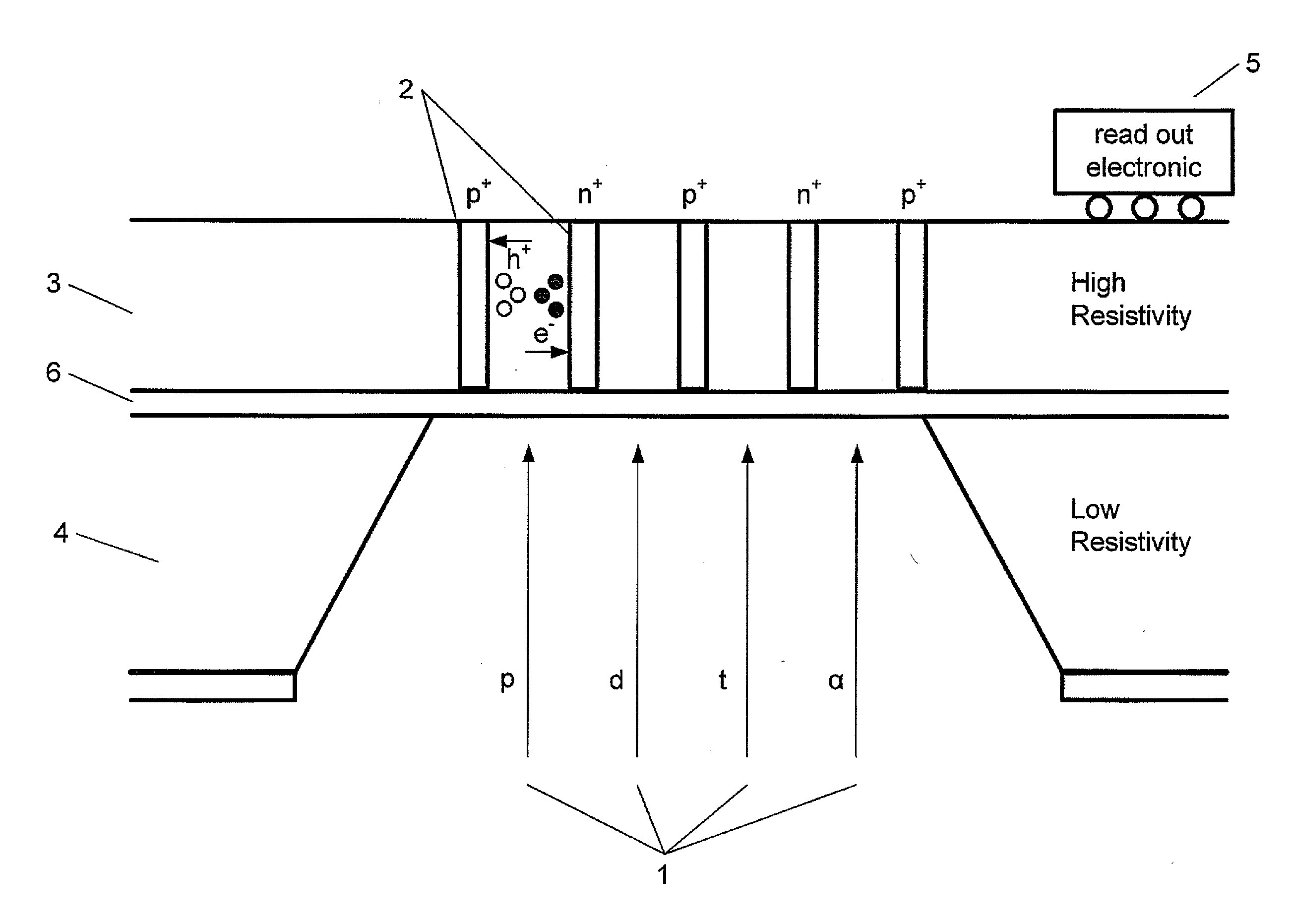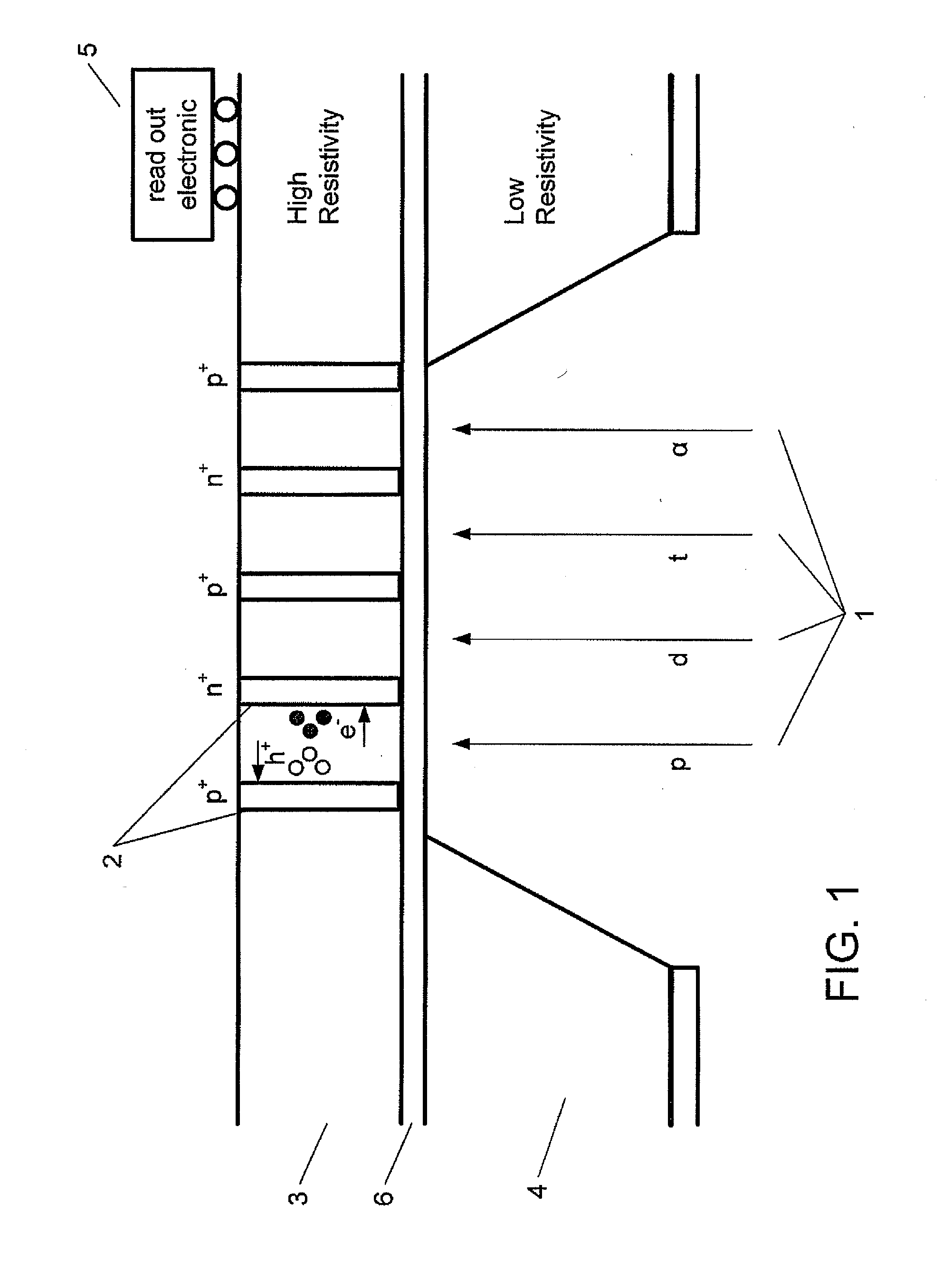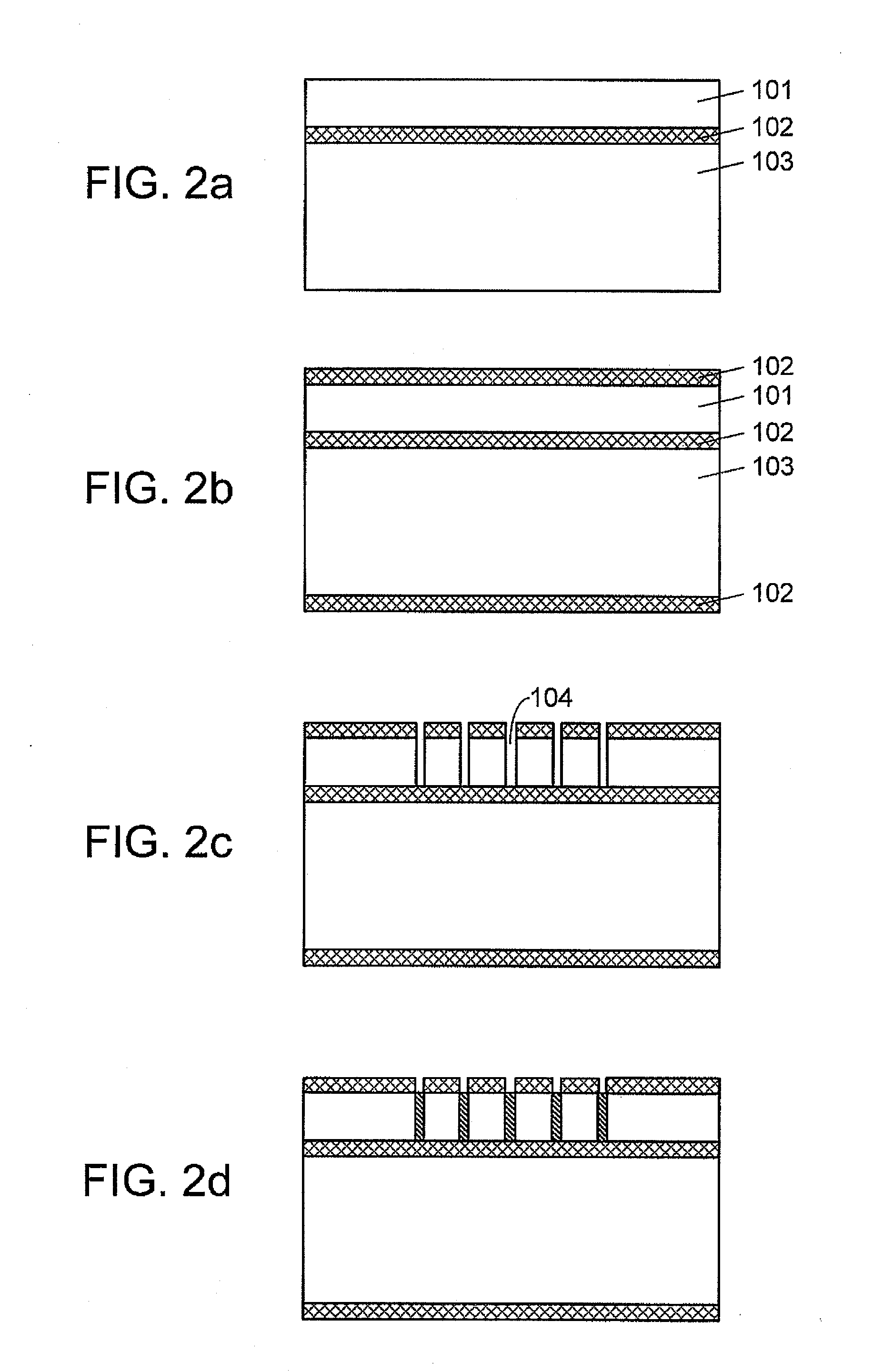Radiation detector, method of manufacturing a radiation detector and use of the detector for measuring radiation
a radiation detector and detector technology, applied in the field of radiation detectors, can solve the problems of high cost of silicon detectors, ineffective measurement, and complex cooling, and achieve the effects of high radiation hardness, high counting rate, and fast charge collection
- Summary
- Abstract
- Description
- Claims
- Application Information
AI Technical Summary
Benefits of technology
Problems solved by technology
Method used
Image
Examples
Embodiment Construction
[0060]FIG. 1 is a schematic view of the detector of the invention. The radiation 1 to be detected with the detector of the invention enters the detector as shown in FIG. 1 through an entrance window in a low-resistivity silicon layer 4. The radiation 1 consists of p (protons), d (deuterons), t (tritons) and α particles as well as n (neutrons) and γ particles. It is only the only the α alpha, p protons, d deutrons, and t tritons that are of interest in the invention, the signals generated by the neutrons and gamma particles should be eliminated.
[0061]After having entered the entrance window, the radiation passes the thin passivation layer 6 made of silicon dioxide. This layer is a protective layer that forms a hermetic seal over the circuit elements. This intermediate passivation layer 6 separates the high and low resistivity layers from each other, the thickness being as thin as what is possible from a manufacture view. The function of the passivation is to neutralized the surface c...
PUM
 Login to View More
Login to View More Abstract
Description
Claims
Application Information
 Login to View More
Login to View More - R&D
- Intellectual Property
- Life Sciences
- Materials
- Tech Scout
- Unparalleled Data Quality
- Higher Quality Content
- 60% Fewer Hallucinations
Browse by: Latest US Patents, China's latest patents, Technical Efficacy Thesaurus, Application Domain, Technology Topic, Popular Technical Reports.
© 2025 PatSnap. All rights reserved.Legal|Privacy policy|Modern Slavery Act Transparency Statement|Sitemap|About US| Contact US: help@patsnap.com



